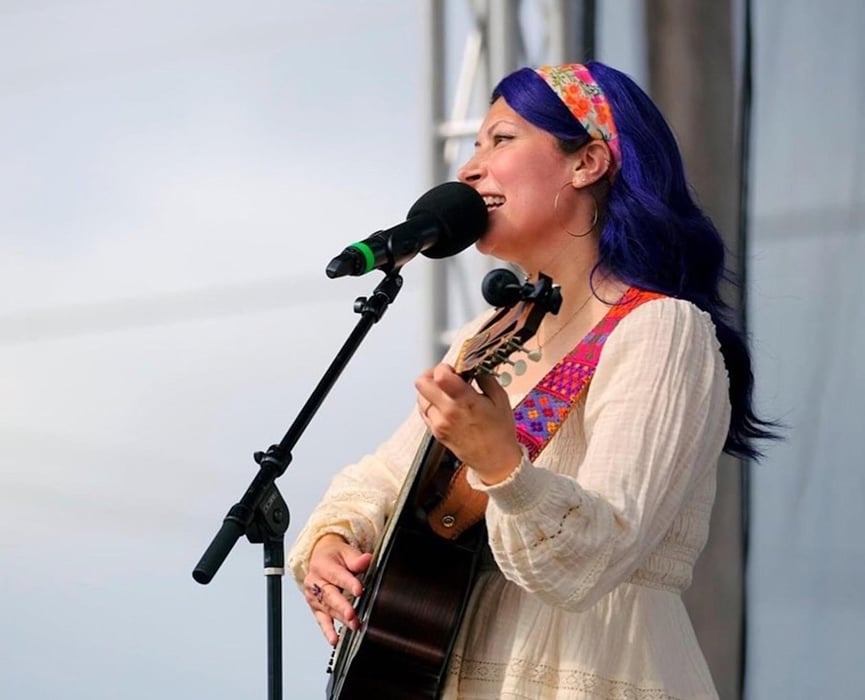What & How You Sing Might Impact Risk to Vocal Cords

WEDNESDAY, Dec. 7, 2022 (HealthDay News) – How singers use their voices, including the genre of music they perform, has an impact on vocal injury, new research finds.
Dr. Lesley Childs, medical director of the Voice Center at University of Texas Southwestern in Dallas, led a two-part study of more than 1,000 patient records.
The study looked at phonotraumatic lesions in patients' vocal folds, including benign nodules, pseudocysts and hemorrhagic polyps. All of these can lead to hoarseness and are typically caused by overuse or straining of the voice.
Researchers found that nodules were almost equally found across all singing genres. Opera singers had a significantly higher proportion of pseudocysts. People who sang in the praise/worship genre had significantly more hemorrhagic polyps.
“These findings, combined with clinical observations, suggest that nodules may be related more to the speaking voice than the singing voice since they were more or less equally distributed across genres,” Childs said in a news release. “At the same time, the style of singing, acoustic environment and vocal demands unique to each genre clearly impact both the frequency and type of injuries that develop, with opera singers presenting with more chronic injury patterns and praise/worship singers presenting with more acute injuries.”
In the first part of the study, researchers looked at 712 singers who had voice disorders between June 2017 and December 2019. About 26.8% were diagnosed with a phonotraumatic lesion.
In the second part of the study, researchers reviewed the cases of 443 singers diagnosed with vocal fold lesions. They included patients' primary genre of singing in this review, making it possible to identify which had higher injury rates.
“Understanding the likelihood and potential causes of both chronic and acute injuries to the vocal folds is extremely beneficial for both singers and voice instructors,” Childs said. “By considering their singing genre’s unique vocal load, acoustic environment and the vocal technique employed, they can work to modify behaviors and possibly prevent vocal fold injury.”
The study is considered a complement to other research by the Voice Center, including a study released in May that identified the most common vocal injuries sustained by singers, both professional and amateur.
One of those treated at the Voice Center was folk singer/songwriter Raquel Lindemann Nguyen, 43.
The singer and elementary school teacher began losing her voice and soon learned it was because of muscle tension dysphonia.
“I couldn’t sing or teach,” she said. “It was impossible to pursue my passion, and I was resigned that I would never sing again. Dr. Childs gave me my life back and more. She treated me with such compassion and kindness.”
Nguyen did voice therapy with Amy Harris, a speech-language pathologist at UT Southwestern. Among other things, she worked on improving airflow and relaxing her throat muscles to reduce strain.
The study findings were published recently in The Laryngoscope.
More information
Johns Hopkins Medicine has more on vocal cord lesions.
SOURCE: UT Southwestern, news release, Dec. 5, 2022
Related Posts
¿Qué tan fácilmente se propaga la COVID-19 al cantar?
LUNES, 29 de noviembre de 2021 (HealthDay News) -- Cantar en un coro puede ser...
Even Alligators Might Be Harmed by PFAS ‘Forever Chemicals’
THURSDAY, Oct. 20, 2022 (HealthDay News) -- Alligators along North Carolina's...
Transfieren a Damar Hamlin a un hospital de Buffalo mientras se recupera del paro cardiaco
MARTES, 10 de enero de 2023 (HealthDay News) -- El profundo (safety) de los...
Amsler Grid Not Sensitive Enough for Diagnosing Neovascular AMD
MONDAY, Feb. 27, 2023 (HealthDay News) -- The Amsler grid has a sensitivity of...
